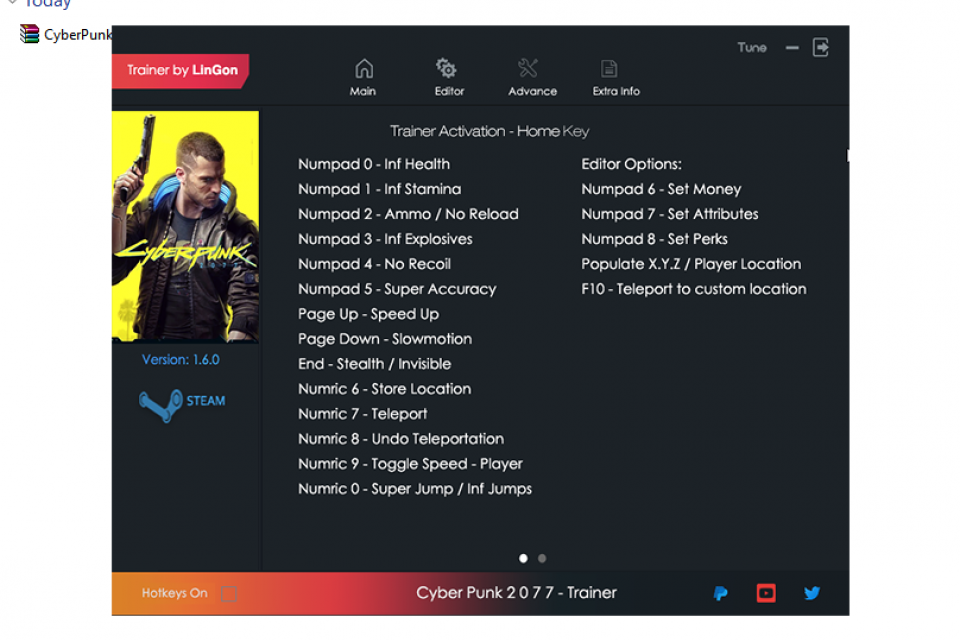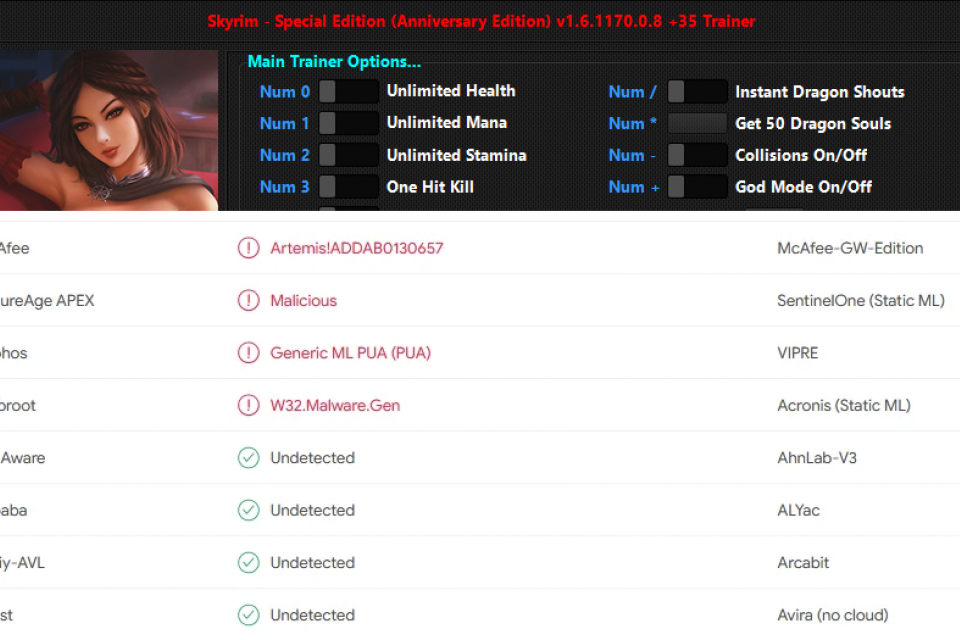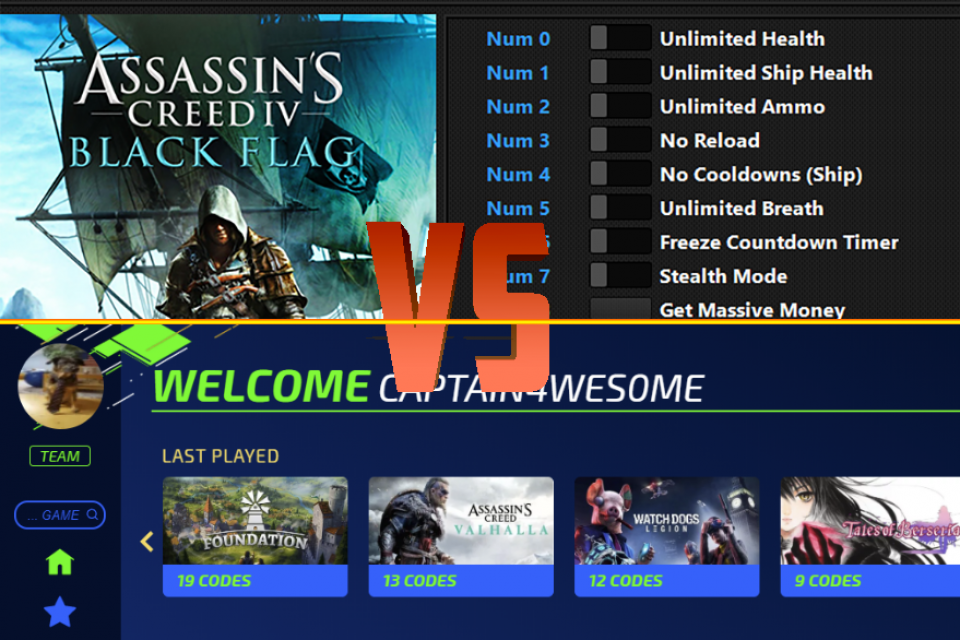
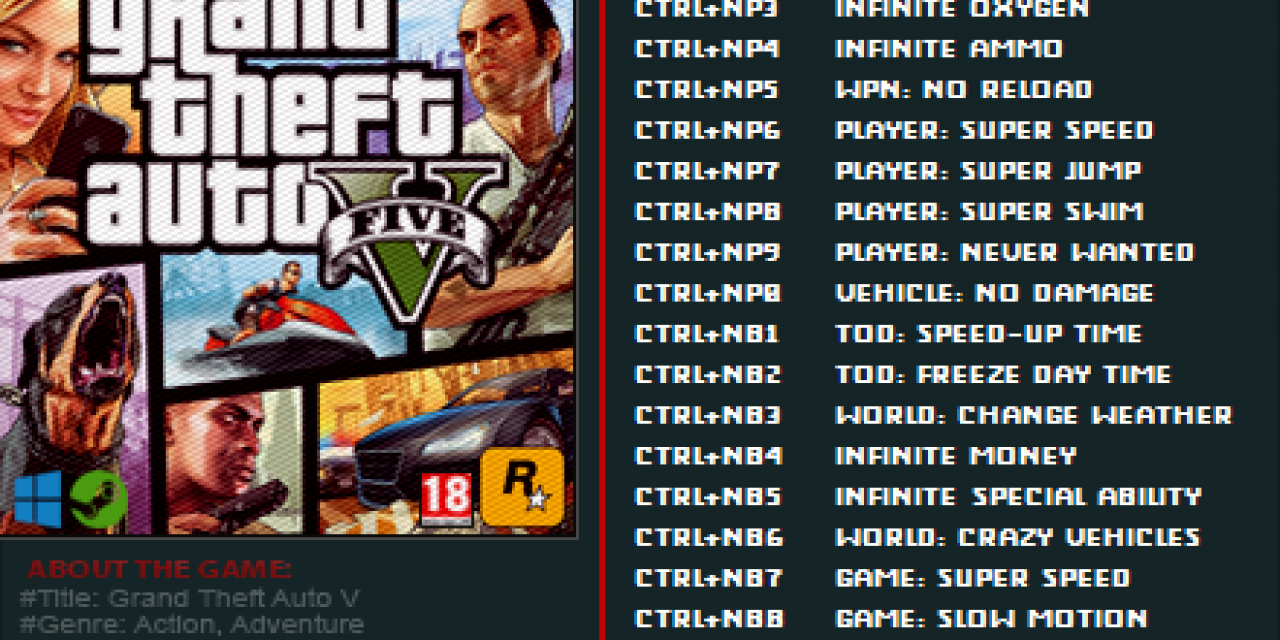
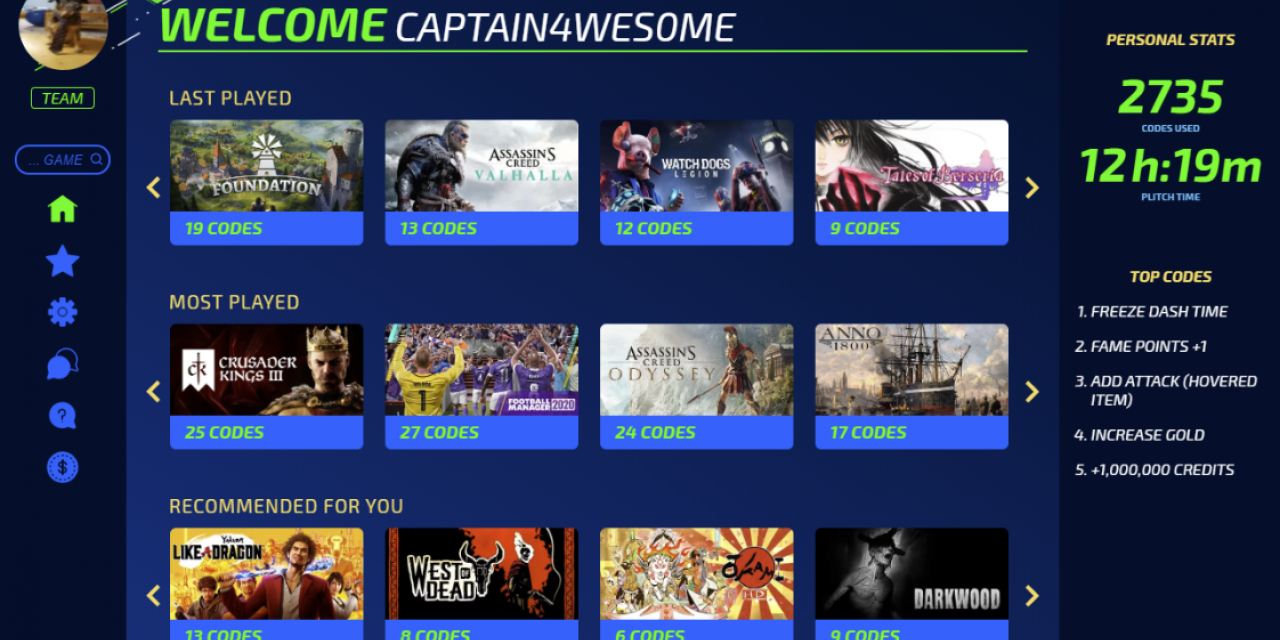
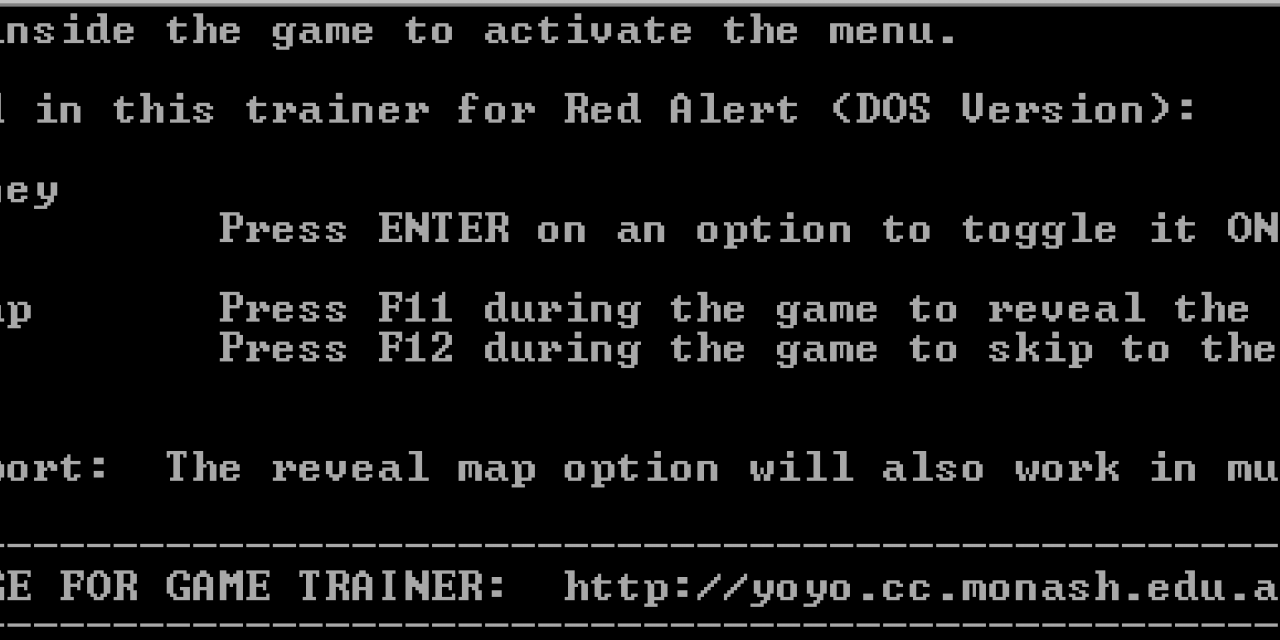
Many of us are very aware of the concept of cheats inside games. Usually created as a way to allow game testers to access items or weapons easily, or push a game to its limits with god modes, cheats are a great way to have some fun with a game if you’re getting bored with it, or just want to bypass a difficult area.
In-game Cheat Codes:
It’s important to note that in-game cheats are generally placed there by the game’s developers, either as easter eggs, or as aides for testers. If you want to push a game even further, you’re often going to need something a little stronger. If you want to alter various variables in the game, or create cheats where none existed before, you’re going to need a game trainer.
The Need for Game Trainers:
Game trainers come into play when a game lacks built-in cheat codes or to expand upon the existing in-built cheats, providing additional features and new cheats.
But what is a game trainer? “Game trainer” may not be a particularly common term, but they are a concept with a history almost as long as video games themselves. The first game trainers appeared in the 1980s, and took the form of altered versions of games, with cheats built into the games by software “crackers”, who would remove any copy protection and make the game available with modifications. These crackers were primarily a part of an international computer art subculture called the Demoscene, a vibrant, creative community that celebrated the art of computer programming and digital creativity.
How Game Trainers Work:
Video games need to track a lot of data, and that data is stored inside your computer’s RAM. That data includes anything that’s likely to be changed over time, such as money, life counts, levels, pretty much everything of value within the game. As such, if something is able to access that RAM, it can make changes to those values. That is, essentially, what a game trainer does. Each game trainer knows exactly where the values it alters sits in RAM, so it’s able to make changes to it.
There’s a downside to this, though. Since the game library and the game trainer need to keep extremely close to each other, they use inter-process communication to stay updated, and the large amounts of data being constantly passed back and forth between the two programs can sometimes trip malware and virus scanners, and lead to false positives.
We have categorized game trainers into 3 main types, each with their pros and cons as they have evolved over the last few decades.
Integrated Game Trainers:

Command & Conquer: Red Alert Game Trainer, 1996
The genesis of game trainers dates back to the early 1980s and 1990s, a period that witnessed the inception of these tools in the realm of cracked video games. These trainers were embeded within the games software and served as a clandestine advantage, akin to an "Ace In The Hole," offering players an edge unbeknownst to the game itself. These early trainers necessitated activation before the game loads up, setting a procedural precedent distinct from the methods employed by modern equivalents.
In terms of functionality, these trainers were characterized by their simplicity and conciseness. Typically, they provided a limited array of cheats, each denoted by a singular '+' sign. This minimalist approach is exemplified in trainers like the "Duke Nukem +++ Trainer," where the number of '+' signs directly corresponded to the number of cheats available. This straightforward and unembellished design not only facilitated ease of use but also reflected the technological and cultural context of the era, marking a foundational phase in the evolution of game trainers.
Standalone Game Trainers:

Grand Theft Auto V Game Trainer by FutureX
Standalone game trainers represent a significant evolution in the realm of video game enhancement tools. Distinct from their predecessors, these trainers are not embedded within the game's software but instead operate as independent programs. This separation marks a pivotal shift from the integrated trainers of earlier gaming eras. Standalone trainers exert their influence by directly manipulating the game's memory in real-time. This capability enables players to activate a variety of cheats, such as unlimited health or ammunition, fundamentally altering the gaming experience.
The concept of standalone game trainers gained significant traction with the launch of MegaGames.com in July 1998, which became the first website to host these trainers on the Web. Being one of the largest websites in the early 2000s, MegaGames.com played a crucial role in popularizing the concept of game trainers in general.
The advent of standalone game trainers coincides with advancements in gaming technology and a deeper understanding of software manipulation techniques. Unlike the integrated trainers, which were part of the game's core software, standalone trainers demonstrate a more sophisticated and nuanced approach to modifying game behavior. They achieve this without the need to directly alter the game's code, showcasing the ingenuity and technical prowess of their developers.
Furthermore, the scope of cheats available in standalone trainers is typically more extensive than in their integrated counterparts. This breadth of options is often reflected in the way these trainers are named and presented. For instance, a "Grand Theft Auto +24 Trainer" indicates a suite of 24 different cheats, a stark contrast to the simpler, more limited trainers of the past.
The versatility of standalone game trainers extends beyond the Windows operating system, with specific versions being developed for Linux. Given Linux's distinct system architecture and robust security features, these Linux-compatible trainers require bespoke development approaches. They are tailored to effectively operate within the Linux environment, ensuring that players using this platform can access similar cheat functionalities as their Windows-using counterparts. This adaptation underscores the trainers' role in the broader context of gaming's technological advancement and the increasing sophistication of software manipulation techniques.
All-in-one Game Trainers:

PLITCH All-in-one Game Trainer
All-in-one game trainers are software programs that are designed to offer cheats for a wide range of games. The first of it's kind was MegaTrainer XL released in 2001 that later evolved into PLITCH. These trainers are versatile, providing players with numerous cheat functions in a single program. This means you don't need different trainers for different games or cheats; one all-in-one trainer can cover multiple needs. They are also relatively safe since They are particularly popular due to their convenience and the broad scope of cheats they offer, catering to diverse gaming preferences and needs. They usually have a freemium subscription model where some cheats are free, however, to unlock the rest of the features a paid subscription is required.
In addition, all-none- game trainer software is crafted to avoid triggering those red flags that antivirus programs wave around. They know you don't want your antivirus software screaming at you every time you're trying to have some fun in your favorite game. To achieve this, they put a lot of effort into making their software compatible with common antivirus programs. This reduces false positives - those annoying moments when your antivirus wrongly freaks out over a safe file.
Some All-in-one platforms also offer cheats for the Steam deck. Given the unique hardware and software environment of the Steam Deck, these trainers are tailored to work specifically with its ecosystem, ensuring compatibility and functionality with games available on the Steam platform.
The landscape of game cheats and trainers has undergone significant evolution, reflecting the changing dynamics of gaming technology. From the rudimentary integrated trainers of the early gaming era to the sophisticated standalone and all-in-one trainers of today, each type has contributed uniquely to enhancing player experience. These tools not only offer a means to overcome challenging aspects of games but also provide a platform for experimenting and exploring games beyond their intended boundaries. However, it's crucial to acknowledge the potential conflicts with antivirus software, a reminder of the delicate balance between game modification and system integrity. As gaming continues to evolve, the role and sophistication of game trainers are likely to expand, offering even more advanced and diverse ways to customize and enjoy gaming experiences.


